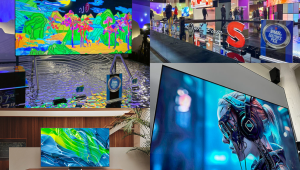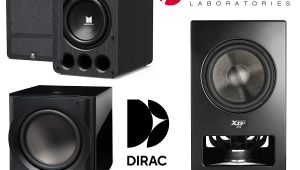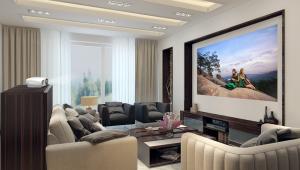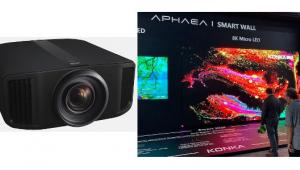Atmos vs. Auro: How High Can You Get?

To my ear, the best Atmos demo at CEDIA by far was in Steinway Lyngdorf’s high-performance audio room. The company’s 9.2.4-channel system was built around the company’s new 16-channel P200 processor, an $18,000 unit that features exotic room correction and time-alignment technology to lift a layer of muddled grunge that you didn’t know you were hearing in all the other demos until you suddenly heard the same content played back clean; all this, I’ll add, in a cavernous ballroom space with a slap-echo that ran from Denver to Detroit and back again. Absolutely remarkable detail, clarity, and open, three dimensional imaging that really showed off what Atmos can do. If you’ve got about $130,000 to spare for the processor, digitally connected amps, and all the speakers, you’ll be everyone’s best friend.
A few doors down from Steinway was another interesting demo, this one from Auro Technologies, the Belgian firrm that’s created an immersive surround system for theatrical use called Auro-3D and is now attempting to move it into the home theater realm just as Dolby is migrating Atmos. Unlike Atmos, which uses object-based mixing, Auro-3D is a discrete but scalable 13.1-channel system, with most installations optimized at 11.1 channels; both systems ideally require content that has been specifically mixed for them. Auro-3D divides the speakers into three vertical layers instead of Atmos’ two. There are the lower-layer, ear-level speakers at the front, sides, and back, corresponding height speakers that situate right above ear level, and a final “top” ceiling speaker that is referred to as the “voice of god” channel. Auro’s room used a 16-channel Datasat RS20i processor and included 20 speakers, six subwoofers, and ten 1,000-watt amplifiers. It was an impressive demo that, like Atmos, did a superb job of creating a bubble of overhead ambience that far surpasses the realism of any traditional home surround system.
Auro-3D has been gaining theater installations since its 2011 debut—there are now about 500 worldwide, though just a handful in the U.S. About 40 films have been mixed with Auro 11.1 sound, much of it Bollywood fare, but a bunch of Hollywood blockbusters as well. Does this mean there’s a format war brewing for the future of immersive home theater sound? If so, Dolby’s got the edge out of the box, with many more films already mixed in Atmos, and a bunch of receiver and speaker manufacturers signed on to provide Atmos home solutions. At present, the only Auro 3D receiver is Auro’s own $16,700 Auriga, and there are two similarly expensive processors available from Datasat and Trinnov. Nor is there any “Auro-enabled” reflective speaker technology being touted as an option for upgrades. Only time will tell if our future AVRs will offer Auro or Atmos playback with the flick of a switch, just as today’s let us bounce between Dolby TrueHD and DTS-HD Master Audio. At this point, nothing would surprise me.






























































